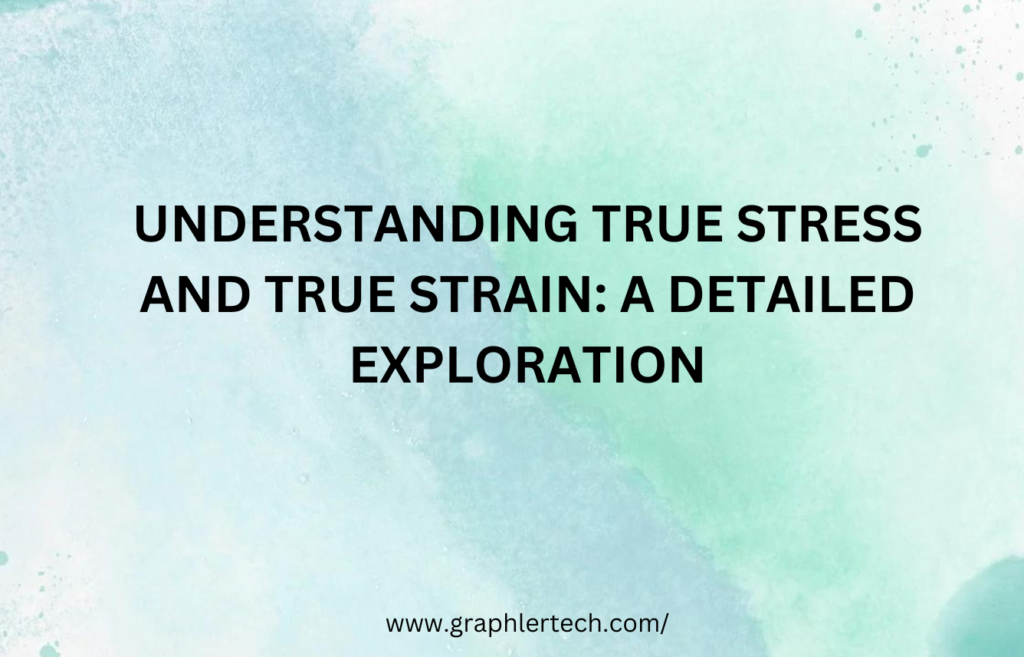In the study of material science and mechanical engineering, understanding how materials behave under different loading conditions is crucial. Among the fundamental concepts that engineers and scientists often explore are true stress and true strain. These measures provide a more accurate representation of material behavior, especially when compared to their counterparts—engineering stress and strain. This blog will delve into the definitions, differences, and significance of true stress and true strain in material analysis.
What is True Stress?
True stress is defined as the stress determined by the instantaneous cross-sectional area of a material as it deforms under load. Unlike engineering stress, which uses the original cross-sectional area, true stress accounts for the changes in area that occur during deformation.
The formula for true stress (σₜ) is given by:
σt=FAiσt=AiF
where:
- FF is the applied force,
- AiAi is the instantaneous cross-sectional area of the material.
As the material undergoes plastic deformation, its cross-sectional area typically decreases, leading to an increase in true stress even if the applied force remains constant. This provides a more accurate measure of the material’s strength and behavior, particularly in cases of significant deformation.
What is True Strain?
True strain (or logarithmic strain) is a measure of deformation that considers the continuous change in length of a material. It provides a more precise description of the material’s elongation, especially during large deformations.
The formula for true strain (εₜ) is:
ϵt=ln(LiL0)ϵt=ln(L0Li)
where:
- LiLi is the instantaneous length,
- L0L0 is the original length of the material.
Alternatively, true strain can be expressed in incremental form:
ϵt=∫L0LidLLϵt=∫L0LiLdL
This incremental approach highlights the continuous nature of true strain, making it a valuable tool for understanding material behavior under varying loads.
True Stress vs. Engineering Stress
It’s essential to distinguish between true stress and engineering stress. Engineering stress uses the original cross-sectional area throughout the deformation process, assuming it remains constant. This can lead to underestimation of stress values, particularly in cases of significant deformation. True stress, on the other hand, accounts for the instantaneous area, providing a more accurate assessment of the material’s response to loading.
True Strain vs. Engineering Strain
Similarly, engineering strain is based on the original length of the material and doesn’t account for the continuous change in length. True strain, with its logarithmic approach, offers a more detailed view of how the material deforms, especially when the deformation is substantial.
Why Are True Stress and True Strain Important?
True stress and true strain are critical for understanding material behavior beyond the elastic limit, where plastic deformation occurs. They are particularly important in industries where materials are subjected to high levels of strain, such as metal forming, aerospace, and automotive sectors. By using true stress and strain, engineers can more accurately predict failure points, design more reliable components, and ensure safety in applications where materials undergo significant deformation.
Conclusion
True stress and true strain are advanced concepts in material science that provide a more realistic understanding of material behavior under load. Unlike their engineering counterparts, they account for the continuous changes in a material’s geometry during deformation, offering a more precise analysis. As materials continue to be pushed to their limits in various applications, the importance of these measures in ensuring safety and performance cannot be overstated.
Understanding true stress and true strain is not just an academic exercise; it is a practical necessity for engineers and scientists working with materials that undergo significant deformation. By integrating these concepts into analysis and design processes, the reliability and efficiency of engineered products can be significantly enhanced.
Reach out Graphler technology for a CFD Consulting Services ,we are also specialized in Stress Analysis Services , Structural Design Services and more.


